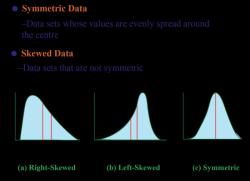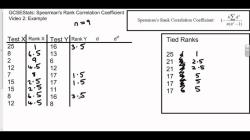How to assign a probability?
Assigning probabilities is a fundamental concept in probability theory, and it involves quantifying the likelihood of events or outcomes. There are several principles and methods for assigning probabilities, depending on the nature of the problem and the information available. Here are some common principles and methods for assigning probabilities:
1. Classical Probability:
- This method is used when all outcomes in a sample space are equally likely.
- The probability of an event (E) is given by:
2. Relative Frequency Probability:
- This method uses historical data or observations to estimate probabilities.
- The probability of an event (E) is estimated based on the relative frequency of E occurring in a large number of trials or observations.
- For example, if an event E occurs 60 times out of 100 trials, the relative frequency probability of E is .
3. Subjective Probability:
- Subjective probability is based on an individual's judgment, personal beliefs, or expert opinions.
- It is often used when empirical data is limited or when dealing with uncertain or unique situations.
- Assigning subjective probabilities involves assessing the likelihood of an event based on available information and personal assessment.
4. Probability Distribution Functions:
- Probability distribution functions, such as the normal distribution, binomial distribution, or Poisson distribution, provide a mathematical framework for assigning probabilities to different outcomes.
- The probabilities are determined by specific mathematical formulas and parameters relevant to the distribution.
5. Law of Large Numbers:
- The Law of Large Numbers states that as the number of trials or observations increases, the relative frequency of an event approaches its true probability.
- This principle is often used in statistical sampling and estimating probabilities from data.
6. Bayesian Probability:
- Bayesian probability involves updating probabilities based on new evidence or information.
- Initially, a prior probability is assigned based on existing knowledge, and as new data becomes available, the probability is updated using Bayes' theorem.
7. Combinatorial Methods:
- In cases where outcomes are combinations or permutations of elements, combinatorial methods such as combinations and permutations are used to assign probabilities.
8. Probability Trees:
- Probability trees are graphical tools used to break down complex probability problems into simpler steps. They help assign probabilities to different branches of events.
9. Markov Chain Models:
- Markov chains are used to model sequential processes where future events depend only on the current state.
- Probabilities in Markov chains are assigned based on transition probabilities from one state to another.
The choice of which method to use for assigning probabilities depends on the specific problem, the availability of data, the nature of the events, and the context of the analysis. It's essential to apply the appropriate method carefully to ensure accurate and meaningful probability assignments, especially in decision-making and statistical analysis.
Assigning Probability: A Step-by-Step Guide to Making Informed Decisions
Assigning probability is the process of assigning a numerical value to the likelihood of an event happening. It is a useful skill for making informed decisions in a variety of situations.
To assign probability to an event, you can follow these steps:
- Identify the event. What is the event that you want to assign a probability to? Be as specific as possible.
- Gather relevant information. What do you know about the event? What factors might affect its likelihood of happening?
- Consider all possible outcomes. What are all the possible outcomes of the event?
- Assign a probability to each outcome. Use the information you have gathered to assign a probability to each outcome. The probabilities should add up to 1.
- Evaluate your results. Make sure that your probabilities are reasonable and that they reflect your current knowledge of the event.
Here is an example:
Event: Rolling a die and getting a 6.
Relevant information: The die is fair, meaning that each outcome is equally likely.
Possible outcomes: 1, 2, 3, 4, 5, or 6.
Probability of each outcome: 1/6.
Evaluation: The probabilities are reasonable and they reflect our current knowledge of the event.
The Science of Probability: Techniques for Assigning Values
There are a number of different techniques that can be used to assign values to probabilities. Some of the most common techniques include:
- Subjective probability: This technique involves assigning probabilities based on your own personal judgment and experience.
- Frequency probability: This technique involves assigning probabilities based on the observed frequency of an event happening.
- Axiomatic probability: This technique involves assigning probabilities based on a set of axioms, or mathematical rules.
The technique you choose will depend on the specific situation and the information that you have available.
Probability Assessment Made Easy: Methods for Assigning Probabilities
There are a number of different methods that can be used to assess probabilities. Some of the most common methods include:
- Expert opinion: This method involves consulting with experts in the field to get their opinion on the probability of an event happening.
- Historical data: This method involves looking at historical data to see how often an event has happened in the past.
- Monte Carlo simulation: This method involves using a computer to simulate an event and calculate the probability of different outcomes.
The method you choose will depend on the specific situation and the information that you have available.
By following these steps and using the appropriate techniques, you can assign probabilities to events and make more informed decisions.













